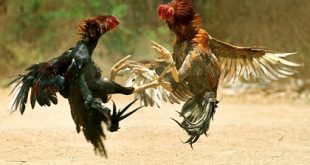Dogs, often called humanity’s best friend, possess unique and fascinating body structures that serve specific purposes. Each body part contributes to their overall functioning, enabling them to live healthy lives, perform tasks, and build strong bonds with humans. This article will dive deep into the anatomy of a dog, exploring the major body parts and their functions in detail.
A Body Part of A Dog
1. The Head
The head of a dog houses essential sensory organs and serves as a communication hub. Key features include:
- Eyes: Dogs’ eyes provide vision, though their sight differs from humans. While dogs are not completely colorblind, they see fewer colors, mainly shades of blue and yellow. Their eyes excel in low-light conditions due to the presence of a reflective layer called the tapetum lucidum, which enhances night vision. This makes them excellent hunters and guardians in dim light.
- Ears: Dogs’ ears are highly sensitive and can detect a broader range of frequencies compared to humans. Their ability to swivel their ears independently helps pinpoint sound sources, a crucial trait for hunting and alerting owners of potential threats.
- Nose: The nose is perhaps a dog’s most impressive sensory organ. Dogs have up to 300 million olfactory receptors compared to humans’ six million. This extraordinary sense of smell is why they are used in tasks like tracking, detecting narcotics, or finding missing persons. Their noses also play a role in temperature regulation.
- Mouth and Teeth: A dog’s mouth is equipped with 42 teeth designed for gripping, tearing, and chewing food. Their saliva aids in the initial digestion process. The tongue plays a role in drinking water and cooling the body through panting.
2. The Neck
The neck is vital for mobility and support. It contains:
- Vertebrae and Muscles: These provide flexibility and strength, allowing dogs to move their heads and maintain posture.
- Throat: Houses the esophagus and trachea, essential for swallowing food and breathing.
3. The Torso
The torso protects vital organs and provides the framework for the body. It includes:
- Rib Cage: This structure shields the heart and lungs, protecting them from external trauma.
- Heart: The heart pumps oxygenated blood throughout the body, supporting vital functions.
- Lungs: Dogs rely on their lungs for oxygen exchange. Their breathing rate varies depending on activity level and environmental conditions.
- Stomach and Digestive Tract: These organs break down food and absorb nutrients essential for energy and growth. A dog’s digestive system is adapted for a carnivorous diet but can also process plant-based foods.
4. The Limbs
Dogs’ limbs are designed for agility, speed, and strength. They are categorized into forelimbs and hindlimbs:
- Forelimbs: These consist of shoulders, elbows, and paws. They provide stability and are essential for movements like digging or catching prey.
- Hindlimbs: These are stronger and provide the thrust for running and jumping. The thighs and calves house powerful muscles that enable quick bursts of speed.
- Paws: Each paw has pads that provide cushioning and traction. They help absorb shock during running or walking and protect the bones and joints. The claws are used for digging and gripping surfaces.
5. The Tail
A dog’s tail is not just for wagging; it serves multiple purposes:
- Communication: Dogs use their tails to express emotions. A wagging tail often indicates happiness, while a tucked tail can signify fear or submission.
- Balance: The tail helps dogs maintain balance during movements like running, climbing, or making sharp turns.
- Protection: For certain breeds, tails act as a shield, especially in cold climates, where they curl them around their bodies for warmth.
6. The Skin and Coat
The skin and coat form the outer protective layer of a dog’s body:
- Skin: Acts as a barrier against external threats like bacteria, viruses, and environmental elements.
- Coat: The fur provides insulation, protecting the dog from extreme temperatures. Double-coated breeds, like Huskies, have an undercoat for warmth and an outer coat for water resistance.
7. Internal Systems
- Circulatory System: Delivers oxygen and nutrients while removing waste products. It supports endurance and physical activities.
- Respiratory System: Works in tandem with the circulatory system to supply oxygen and remove carbon dioxide.
- Nervous System: Includes the brain, spinal cord, and nerves, which control all voluntary and involuntary actions.
- Muscular System: Provides strength, agility, and the ability to perform tasks like running, jumping, and pulling.
8. The Reproductive Organs
Reproductive organs vary between males and females and are essential for breeding. In males, the testicles produce sperm, while in females, the ovaries release eggs. The reproductive system ensures the continuation of their species.
9. The Feet and Claws
Dogs’ feet and claws are specialized for various functions:
- Feet: Dogs have digitigrade feet, meaning they walk on their toes. This adaptation enhances speed and agility.
- Claws: Used for digging, gripping, and self-defense.
10. The Senses and Behavior
- Hearing: Dogs can hear sounds four times farther than humans. This acute hearing helps them detect danger and communicate with other dogs.
- Smell: Plays a vital role in their behavior. Scents help dogs recognize people, locate food, and identify territories.
- Touch: Whiskers, found on their muzzles, eyebrows, and other parts, are highly sensitive and help them navigate in the dark or tight spaces.
Conclusion
Every body part of a dog is meticulously designed for a specific purpose, enabling them to thrive in their environments and build meaningful relationships with humans. From their keen senses to their agile limbs, each feature contributes to their incredible versatility. Understanding these functions not only deepens our appreciation for dogs but also helps us care for them better, ensuring their well-being and happiness.



